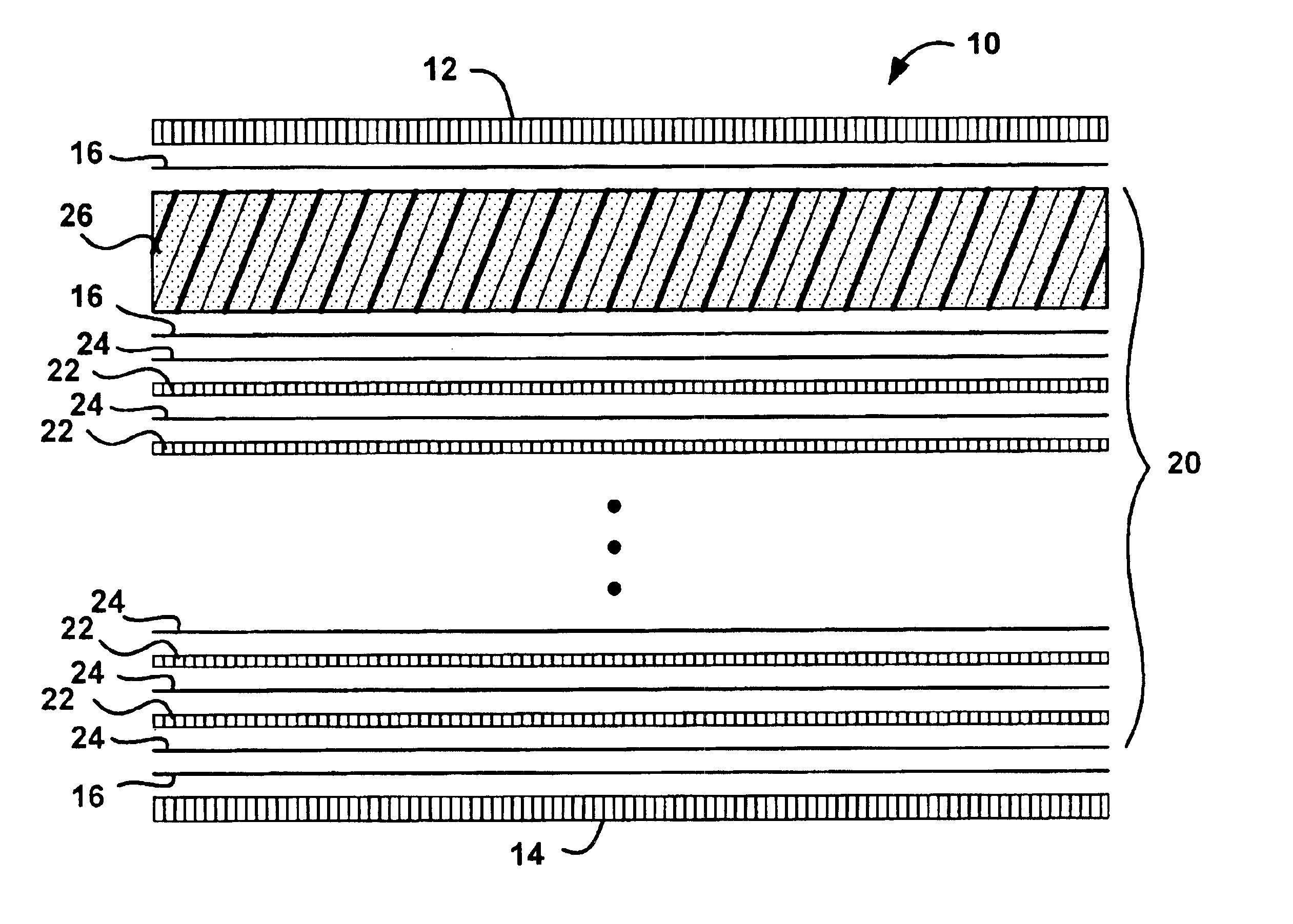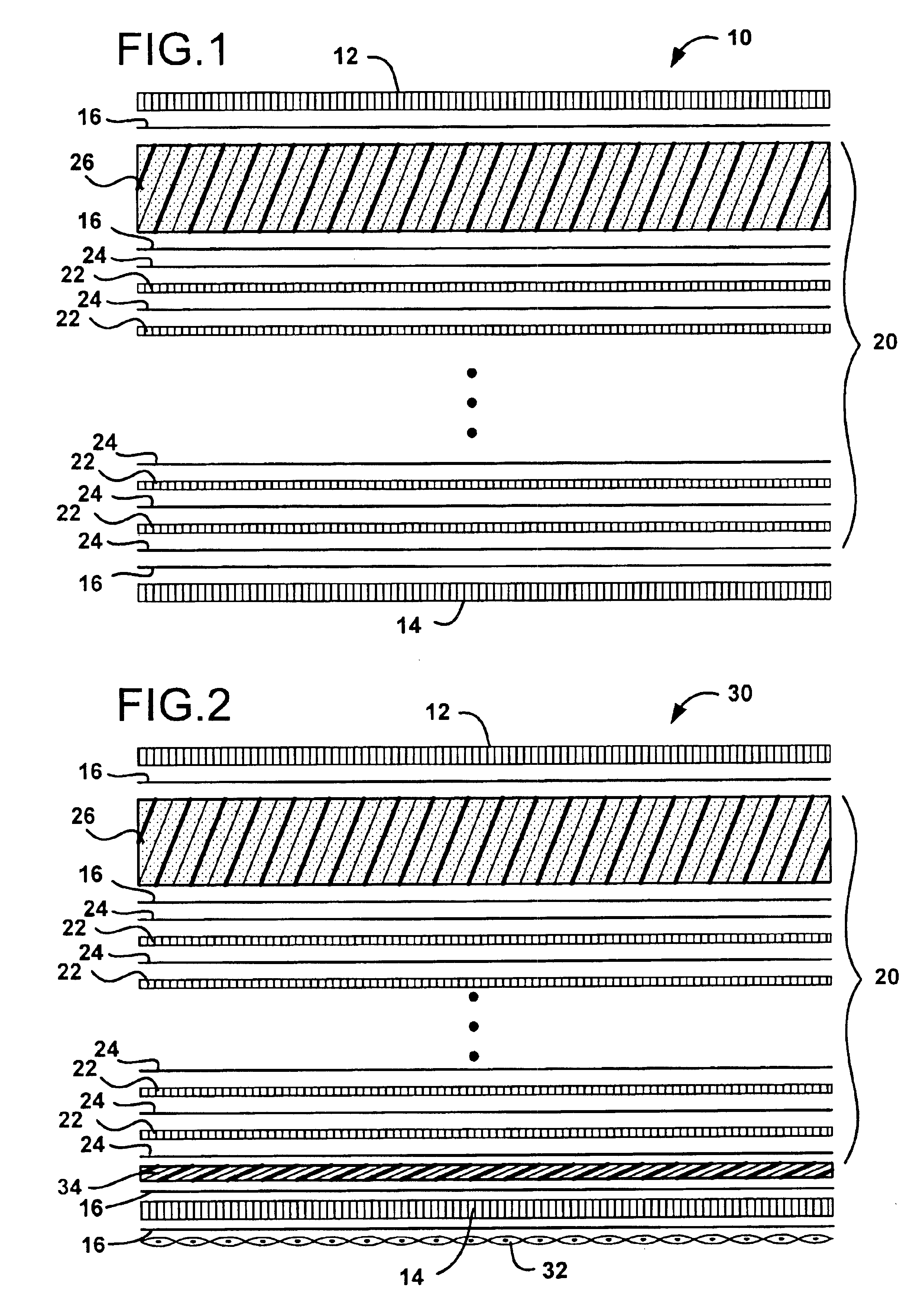Lightweight ballistic resistant rigid structural panel
a technology of rigid structure and ballistic objects, applied in the direction of synthetic resin layered products, protective garments, armour, etc., can solve the problems of insufficient capabilities, insufficient resistance to destruction and penetration of ballistic objects such as bullets and shrapnel, and insufficient capabilities for interior panels suitable for aircra
- Summary
- Abstract
- Description
- Claims
- Application Information
AI Technical Summary
Benefits of technology
Problems solved by technology
Method used
Image
Examples
Embodiment Construction
Two lightweight ballistic resistant rigid structural panels were constructed according to the invention, having finished thicknesses of 0.5 and 1.0 inches, respectively. Each of the panels was constructed with 14 layers of style 745 Kevlar.RTM. fabric interleaved with 3 mil sheets of an ionomer film adhesive. 18-ounce fiberglass woven phenolic prepreg was used for the front and back face skins, and a phenolic-based film adhesive was used to adhere the face skins and cushioning layers to the fabric stack. An aramid (Nomex.RTM.), 4 pound per cubic foot, 0.25 inch cell honeycomb material was used as the cushioning layer. For the 0.5 inch thick panel, a 0.200 inch thick cushioning layer was used, and for the 1.0 inch panel, a 0.700 inch thick cushioning layer was used.
The completed panels were tested for ballistic resistance in accordance with the National Institute of Justice (NIJ) Standard 0101.04 and evaluated for resistance to a level IIIA threat. No ballistic penetration occurred, ...
PUM
| Property | Measurement | Unit |
|---|---|---|
| thickness | aaaaa | aaaaa |
| thick | aaaaa | aaaaa |
| thick | aaaaa | aaaaa |
Abstract
Description
Claims
Application Information
 Login to View More
Login to View More - R&D
- Intellectual Property
- Life Sciences
- Materials
- Tech Scout
- Unparalleled Data Quality
- Higher Quality Content
- 60% Fewer Hallucinations
Browse by: Latest US Patents, China's latest patents, Technical Efficacy Thesaurus, Application Domain, Technology Topic, Popular Technical Reports.
© 2025 PatSnap. All rights reserved.Legal|Privacy policy|Modern Slavery Act Transparency Statement|Sitemap|About US| Contact US: help@patsnap.com



